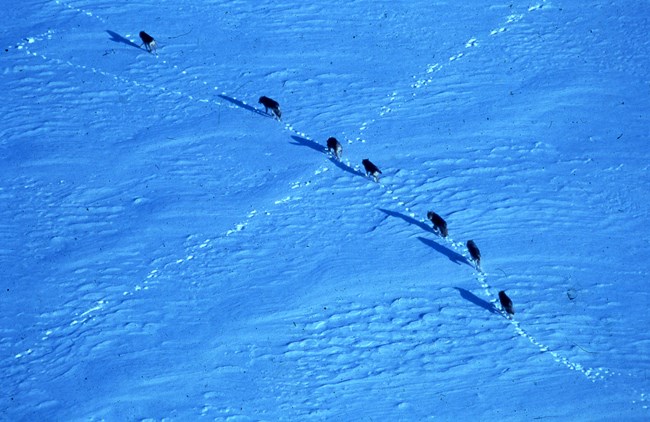Last updated: January 5, 2024
Article
Climate Change at Isle Royale: Wolves
Wolves are an iconic animal on Isle Royale, but they weren’t always present on the landscape. Isle Royale's biodiversity is limited by a natural barrier - Lake Superior. Scientists believe that wolves arrived on Isle Royale in the mid-20th century by walking across an ice bridge that connected the island to the mainland during winter. The arrival of wolves altered Isle Royale’s isolated ecosystem, creating a predator-prey relationship with the island’s moose population, prompting the world’s longest running predator-prey study.

NPS Photo
Climate Concerns
With increasing global temperatures, this predator-prey relationship is jeopardized. Deep freezes that form ice bridges on Lake Superior are not an annual occurrence, and overall ice coverage on Lake Superior is decreasing. With rising global temperatures and the warming of the Great Lakes, ice bridges are less likely to form. Between 1975 and 1985, there were only two years on record that Lake Superior had 30 percent or less ice cover. Between 2010 and 2020, there were only four years that had over 30 percent ice cover.
As ice bridges become less and less frequent, the potential arrival of new wolves, who could add diversity to the gene pool, is limited. As a result, past Isle Royale wolf populations have suffered from physical deformities, low productivity, and low survival rates due to genetic inbreeding. The Isle Royale Wolf Relocation project took place in 2018 and 2019 in efforts to restore a healthy predator-prey balance on the island.
